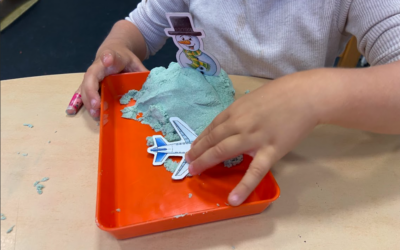The Intruder and the Four Seasons
The Intruder and the Four Seasons
It’s a fun and engaging multilingual card game. The Intruder and the four seasons” is an interactive educational activity designed to enhance language skills through the exploration of the four seasons. Utilizing the “L’Intrus” card game format, this activity incorporates visual arts and seasonal themes to foster vocabulary development, sentence construction, and creative expression.
Adults and children from 6 years old
Vocabulary Enrichment, Reading comprehension, Word recognition, Sentence formation

Sopported Languages
(EN) English
(FR) Français
(HU) Magyar
Online or in-person using a screen or projector
1. Discovery and Identification of the Seasons
- Present images illustrating the seasons.
- Ask the learners to write down the names of the four seasons.
- Match each image to the corresponding season name.
2. Time Awareness
- List the months of the year.
- Remind students of the start and end dates of each season (in France or the relevant country).
3. Personal Expression
- Invite learners to choose their favorite season.
- They explain their choice using sentences that begin with:
- “In winter… / In spring… / In summer… / In autumn…”
4. Musical Listening and Association
- Play excerpts from Vivaldi’s The Four Seasons.
- Ask learners to guess which season each piece represents and justify their choices.
5. Activities and Associations
- Associate common activities with each season (skiing, picnics, harvesting, etc.).
- Show new images and ask learners to match each one to a season by identifying visual elements (clothing, weather, nature, etc.).
- Encourage learners to explain their choices orally.
Version with Printed Cards
- Prepare two decks: One deck with vocabulary image cards and one deck with dialogue expression card.
- Place 8 vocabulary cards face up on the table, either randomly or pre-selected around a specific theme you want to focus on.
- Each participant draws 1 to 4 dialogue cards, depending on how much time is available.
- Ask them to read the expressions aloud and explain what they mean.
- Everyone should write the sentences down in their notebooks
- Using the dialogue cards in their hand, players choose titles for the images on the table.
- Interactive element: When a player correctly guesses the image chosen by the previous player, they keep the corresponding card—adding a playful, competitive aspect to the game.
- After a card is taken, replace it with a new one from the vocabulary deck.

For Educators, Teachers and Parents
Recommendations for teachers
-
- Adapt vocabulary according to language level (A1 to B1): simplify or enrich model sentences to match learners’ abilities.
- Begin with collective work to create a safe learning environment before moving on to individual or pair work.
- Encourage interactivity: let learners handle images, write the names of the seasons on cards, or mime related activities.
- Use varied visual and audio materials: real images, drawings, classical or modern music clips related to the seasons.
- Promote creativity: encourage learners to invent sentences, share memories, or even draw their favorite season.
- Strengthen cross-curricular links: integrate the activity into a broader project (visual arts, music, geography, or poetry).
Recommendations parents
- Play Together: Choose a calmer version with printed cards for relaxed moments at home, or use the online version for more dynamic family time.
- Adapt the game to the child’s age: Start with a smaller number of cards (4 to 6) and gradually introduce more complex elements.
- Explore cultural aspects: Use the seasonal images as an opportunity to talk about traditions or specific activities from your culture or other cultures during each season.
Adaptation/Application of the method
For B1 – B2 Levels
- Deduction and Complex Formulation: Ask the learners to describe a season without naming it, while the others must guess which one it is. Example: “It often rains. The trees change color. We start wearing sweaters.”
- Image Analysis: Show an image related to a season and ask for:
- a detailed description of the scene (weather, clothing, objects, etc.)
- an imagined sequence of what happened before and what will happen next.
- Debates: Suggest debate topics such as:
- Is winter a depressing or inspiring season?
- Should we change the time according to the seasons?
- Objective: To express a well-argued opinion using logical connectors (because, therefore, however, etc.).
For C1 – C2 Levels
- Intercultural Perspective:
- Compare how seasons are represented in different cultures.
- What holidays are associated with them?
- Are the seasons perceived in the same way?
- Are there different seasonal divisions depending on the country (e.g., monsoon, dry season)?
- Artistic Interpretation: Analyze a musical excerpt from The Four Seasons by Vivaldi or a painting representing a season (e.g., Monet, Bruegel). Ask learners:
- to interpret the message or mood of the artwork.
- to associate a season with an emotion and explain why.
References and Resources
- English version : https://view.genially.com/6824ae4f189df707645f01b6
- French version: https://cotaassociation.wixsite.com/learing/intrus-jeu-mulilingue
- Hungarian version: https://view.genially.com/6824b4ed97c0b8ab9b9259ed
Similar Activities
Ma première histoire
This fun activity for all ages uses storytelling and a simple card game to help children develop language skills, creativity, and self-confidence by reading, identifying story elements, and creating their own stories
Training Post
Let children be creative with kinetic sand as they explore textures, create shapes and bring their own imaginative stories to life with sand and cardboard characters in this interactive storytelling activity

